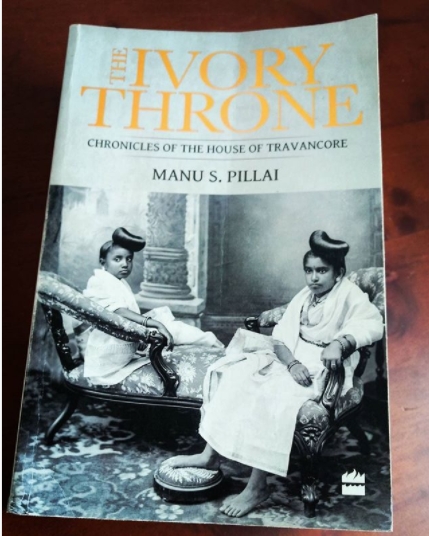Manu S Pillai
Absolutely fantastic, and the strange thing is, if you had asked me when I was even at about page 400 (out of 555) I probably would have used milder adjectives. I also wouldn’t have thought (at that point) that I was likely to change my opinion later because knowing the direction, I didn’t think the last 100 or so pages would even be interesting to me. But while they’re not really the focus of the book, and more an inevitable ending, it (to me) is what delivered the texture that mattered most.
But let’s begin at the beginning. The focus of the book is definitely Maharani Sethu Lakshmi Bayi, who was the Regent of Travancore from 1924-31, but the author spends the first section of the book in setting the context. The canvas is vaster than Travancore itself and everything from the fall of the Zamorin and the entry of Europeans to the evolution of the intricacies that decide the ruler of the land and the prevalent socio cultural setting sets the stage for the reign of the Senior Maharani.
A large section of the book is spent on the rule of the Maharani, and her (now) invisible hand in the transformation of a society. The work she did served as the foundation for the much vaunted socio economic indices that Kerala displays now. This portion of the book is also home to palace intrigues that portray the junior Maharani (a cousin, and the mother of the last Maharajah of Travancore) as the ‘villain of the piece’.
From a historical perspective, I found the facts around Sir CP and Chithira Thirunal (the last Maharajah) very interesting, since my only exposure to them thus far has been in popular Malayalam cinema! (yes!) The perspectives on the temple treasure saga that appear late in the book, and which happened as recently as this decade, were also an eye opener.
I think what affected me in those last hundred pages was the poignancy in the closing of the circle of the Maharani’s life – the relative obscurity before her adoption to the royal household at a young age, to her spending her final days in a small room in Bangalore, without the trappings of royalty, in a relatively obscure existence. As the author began writing about her daughters and the next generation, I felt a faint sense of grudge/irritation for the seemingly casual way in which they treated their legacy (material and otherwise). But the last few pages put them in a different light, and I found myself empathising with them.
The author’s admiration of Lakshmi Bayi is more than evident, and probably deservedly so. While one might feel there is some loss of objectivity here, he does take pains to also chronicle credit for even those who can be seen as her enemies. Indeed, he deserves a lot of credit on multiple counts – the research and scrutiny that has gone into the book, the excellent way of providing the context for events and behaviour, the writing style that makes sure history is accessible and not presented dryly, and most importantly the sensitivity that he has shown in chronicling lives. In 555 pages, there is legend, then history and then contemporary stories one can identify with. That journey is fascinating.

